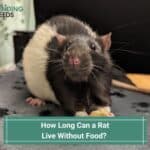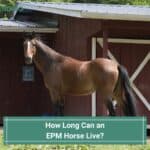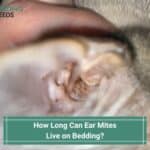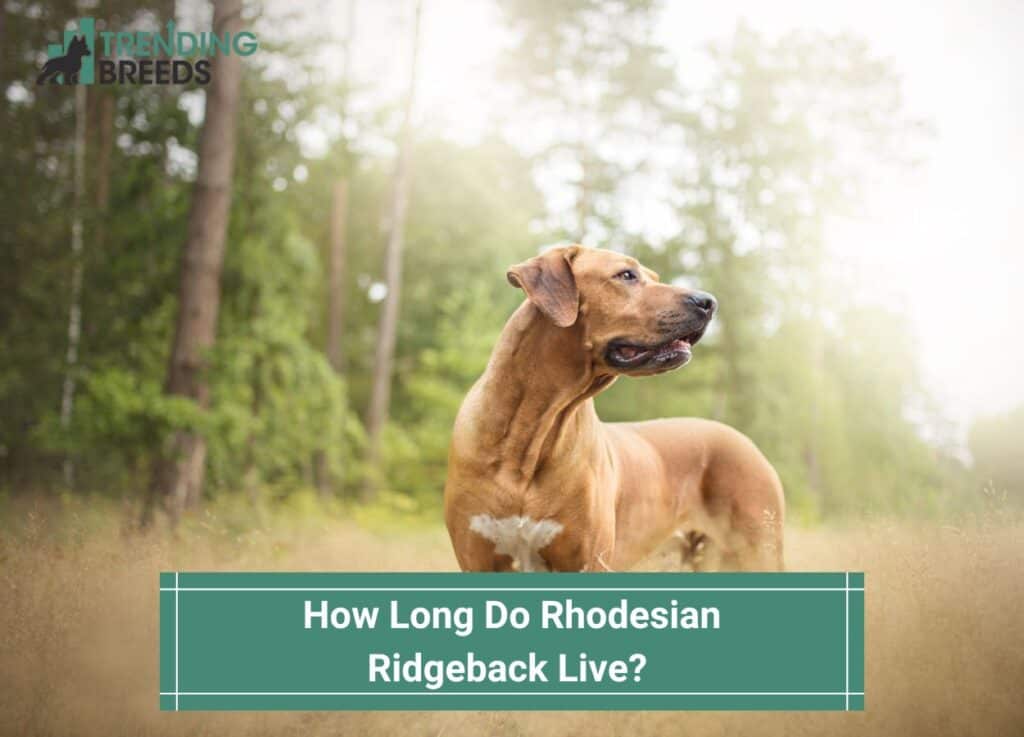
Today we are going to talk about how long do Rhodesian Ridgeback live. Imposing and athletic, the Rhodesian Ridgeback is the most well-known lion hunting dog.
Attacking in packs, they would corner and harass lions and other big game until the hunter caught up and finished the job.
However, they’ve come a long way since their hunting days. Today, the Rhodesian Ridgeback is a beloved family pet and companion dog.
Like many large dogs, they have relatively short lifespans and will live 10 to 12 years. A Ridgeback can live longer than 12 years with proper care and nutrition.
In this blog post, we’ll look more closely at this fascinating breed, the health conditions they are susceptible to, and how you can help a Ridgeback live longer.
Other articles you would like: Interesting Facts About Blue Rhodesian Ridgeback Puppies and Rhodesian Ridgeback Pitbull Mix
Table of Contents
Rhodesian Ridgeback – A Brief History
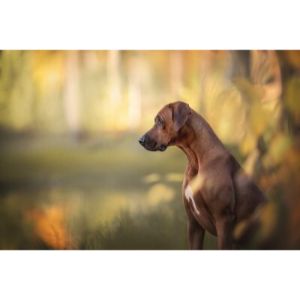
The Rhodesian Ridgeback is a dog breed that originates from Rhodesia, now modern-day Zimbabwe.
The breed was developed in the late 19th century to be a hunting dog, and it is named for the trademark backward-growing ridge of hair that runs along its back.
The Rhodesian Ridgeback is a powerful and athletic dog, and it is known for being loyal and protective of its family.
Today, the Rhodesian Ridgeback is still used as a hunting dog in some parts of Africa, but it is also popular as a family pet in many countries around the world.
What Factors Affect A Rhodesian Ridgeback’s Lifespan?
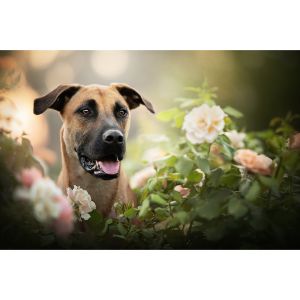
Although many things are determined by genetics, some external factors also can play a part in a Ridgeback’s lifespan.
Diet
Did you know that your dog’s diet plays a big role in its overall health and lifespan? Just like humans, dogs need to eat nutrient-rich food to stay healthy. After all, you are what you eat!
A diet high in fat and calories can lead to obesity, which puts your dog at risk for several health problems including heart disease, diabetes, and joint problems.
Conversely, a diet that is too low in calories can cause your dog to become malnourished. Make sure you are feeding your dog high-quality food that is appropriate for their age, weight, and activity level.
Exercise
Exercise is important for dogs of all ages. It helps keep their minds sharp and their bodies strong. Regular exercise can also help reduce the risk of obesity and associated health problems.
Taking your dog on walks, runs, or hikes is a great way to bond while also getting them the exercise they need.
And don’t forget about mental stimulation! Games like fetch or tug-of-war are great for providing some mental stimulation for your pup.
Veterinary Care
Regular vet check-ups and preventive care are crucial for maintaining your dog’s health and well-being. Your vet can help you create a tailored vaccination schedule based on your dog’s individual needs and risk factors.
They can also diagnose and treat any health problems that may arise.
Be sure to take your pup to the vet at least once a year—more often if they are elderly or have existing health conditions—and always follow through with recommended treatments.
Training
Well-trained dogs are calmer and more balanced than untrained ones. Happier dogs have less stress and anxiety, which can affect their mental and physical health.
In addition, a trained dog is generally better behaved than an untrained one, which can make them more enjoyable to live with.
In addition, a well-trained dog is less likely to run off or get into fights with other animals, both of which can be dangerous. Training can also help to build the bond between you and your dog, making it a more rewarding experience for both of you.
Potential Health Problems Of Rhodesian Ridgebacks
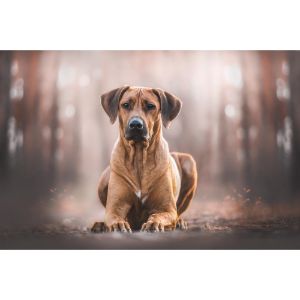
Like any breed, Rhodesian Ridgebacks come with their share of genetic predispositions.
Hip Dysplasia
Like many large breeds, the Rhodesian Ridgeback is also susceptible to a condition known as hip dysplasia.
This occurs when the hip joint does not develop properly, causing pain and lameness. In severe cases, it can lead to arthritis and even deformity.
Hip dysplasia is a hereditary condition, so potential owners need to choose a breeder who takes steps to avoid it.
However, even with responsible breeding, some dogs will still develop the condition. There are many options for treatment, ranging from medication to surgery.
Elbow Dysplasia
Similar to hip dysplasia, elbow dysplasia occurs when the bones in the elbow joint do not grow properly, causing the joint to become misshapen.
This can lead to pain, lameness, and eventually arthritis. Several factors can contribute to elbow dysplasia, including genetics, diet, and injury.
While there is no cure for the condition, early diagnosis and treatment can help to minimize its effects.
Autoimmune Thyroiditis
This condition occurs when the body’s immune system attacks the thyroid gland, causing it to become inflamed and enlarged. Autoimmune thyroiditis can lead to several symptoms, including weight loss, lethargy, and intolerance to cold temperatures.
If left untreated, the condition can eventually lead to permanent damage to the thyroid gland and even death. Fortunately, autoimmune thyroiditis can be effectively managed with medication.
Dermoid Sinuses
Dermoid sinuses are a congenital anomaly found in some Rhodesian Ridgebacks. The condition is caused by abnormal communication between the skin and underlying structures, such as the spinal cord or meninges.
Dermoid sinuses typically appear as linear grooves or pits on the dog’s back, which may be superficial or deep-seated. In some cases, they may be associated with other anomalies, such as dermoids of the eye or brain.
While most dogs with dermoid sinuses are otherwise healthy, the condition can cause neurological problems if the sinus becomes infected.
Treatment involves surgical removal of the affected tissue, and early intervention is essential to minimize the risk of complications.
Wobbler Syndrome
Wobbler syndrome is a neurological disorder that affects the spinal cord and can cause balance problems, weakness in the hind legs, and even paralysis. The exact cause of wobbler syndrome is unknown, but it is believed to be hereditary.
There is no cure for the condition, but it can be managed through weight control, physiotherapy, and medication.
Cataracts
One of the most common eye problems is cataracts, a condition that affects the lens of the eye and leads to blurred or cloudy vision. Cataracts usually develop slowly and can affect one or both eyes.
Early detection is important, as cataracts can eventually lead to blindness. Treatment typically involves surgery to remove the affected lens and replace it with an artificial one.
Hypothyroidism
Hypothyroidism is a condition in which the thyroid gland does not produce enough hormones. This can lead to a number of symptoms, including weight gain, hair loss, and lethargy.
If left untreated, hypothyroidism can seriously impact a dog’s quality of life. However, with early diagnosis and treatment, most dogs with hypothyroidism can live long and happy lives.
Deafness
Deafness is caused by a genetic mutation that affects the development of the auditory nerve.
As a result, affected dogs do not respond to sound in the same way as other dogs. While deafness is not painful, it can be dangerous for dogs, as they will not be able to hear cars or other hazards.
The best way to prevent deafness in Rhodesian Ridgebacks is to have them tested for the mutation before they are bred. By ensuring that only hearing dogs are bred, the incidence of deafness in the breed can be significantly reduced.
Cancer
One health concern that must be taken seriously is cancer. While the exact cause of cancer in dogs is still unknown, some factors may increase the risk. These include exposure to certain chemicals, viral infections, and genetics.
It’s important to be aware of the signs of cancer so you can catch it early and get your dog the treatment he or she needs. With early detection and proper treatment, many dogs can enjoy long, happy lives.
Gastric Torsion (Bloat)
Gastric torsion, also known as bloat, is a serious condition that can affect dogs of any breed. However, certain breeds are more susceptible to bloat than others, and Rhodesian Ridgebacks are one of the most at-risk breeds.
Ridgebacks are particularly prone to bloat because of their deep chests and large stomachs.
When the stomach fills with gas or fluid, it can rotate, cutting off the blood supply to the stomach and other organs.
If not treated immediately, gastric torsion can be fatal. To reduce the risk of bloat, feed smaller meals more times a day and avoid strenuous activity right after a meal.
How You Can Help A Rhodesian Ridgeback Live Longer?
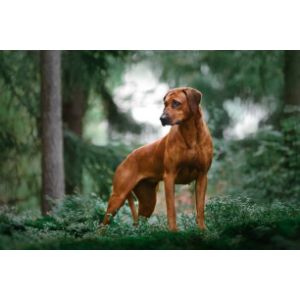
We love our dogs and want them to be with us as long as they can, and there are certain things we can do to help! One of the best ways to do that is by feeding them a healthy diet.
The quality of the food you feed your dog has a direct impact on its health and longevity. Just like humans, dogs need certain vitamins, minerals, and nutrients to stay healthy.
But unfortunately, not all dog foods are created equal. Some contain artificial ingredients and fillers that can do more harm than good.
There are a few things you should look out for when choosing food for your Ridgeback. First, check the label to make sure the food is complete and balanced.
This means that it contains all of the essential nutrients your dog needs in the right proportions. The Association of American Feed Control Officials (AAFCO) is a great resource for checking whether or not a food meets these standards.
You should also make sure that the first ingredient listed on the label is a high-quality protein source like chicken, turkey, lamb, or beef.
Avoid foods that list corn or wheat as the first ingredient, as these are common fillers that do not provide much nutritional value. And finally, steer clear of foods that contain artificial preservatives, flavors, or colors.
In addition to paying attention to what’s in their food, it’s also important to feed your dog the right amount of food based on their age, weight, breed, and activity level.
Puppies and young dogs need more calories than adult dogs because they’re growing so rapidly.
Older dogs tend to need fewer calories because they’re usually less active. You can talk to your veterinarian about how much food your dog needs.
It’s also important to note that Ridgebacks are prone to certain health conditions like obesity or joint problems. You can pick food with added supplements like glucosamine and chondroitin. Omega-3 is also helpful for maintaining healthy joints.
In addition to feeding them a healthy diet, there are other things you can do to help ensure your dog lives a long life. Make sure they stay up-to-date on their vaccinations and visit the vet regularly for checkups—especially as they get older.
Get them spayed or neutered if you haven’t already—this can help prevent certain cancers later in life. And finally, give them plenty of exercise—a tired dog is a good dog!
You will also like:
- Rhodesian Ridgeback Hunting Lions
- Are Rhodesian Ridgebacks Dangerous?
- Rhodesian Ridgebacks: The Good And The Bad
For more information about the Rhodesian Ridgeback Breed, check out the video below:

